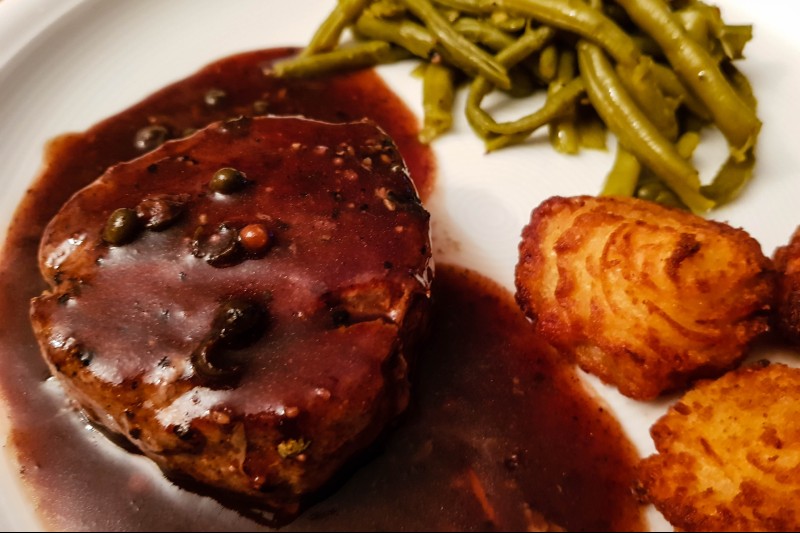Sauces are a great way to elevate just about any dish; add butter to many and you will knock it out of the park. Butter makes everything better. Butter has been used in French cuisine since around the Middle Ages and was once known as the poor people’s fat. We use butter in cooking and baking for the moisture, flavor, and of course, fat content. It helps breads, pastries, and cookies to rise, and gives food a richer texture.
When we talk about texture, we talk about mouthfeel. The way food feels with each and every bite. The use of butter in pastry or other baking recipes is completely different from its use in savory dishes. Savory dishes use butter as an emulsifier, as in a sauce. Sometimes a knob of butter will be added to a dish right before serving. This is to create a rich and silky finish to coat the dish with and to thicken the juices into a quick pan sauce.
Related Guides
When just a few pats of butter won’t do for your dish, that is when you can create sauces such as Beurre Blanc, an Herb Sauce, or perhaps you need a Hollandaise or Bearnaise Sauce. The extra steps you take will make your dishes stand out even more. One such sauce is the butter-enriched red wine butter sauce known as Beurre Rouge.
What is Beurre Rouge
Beurre Rouge is a French butter sauce that literally translates to red butter. It was created by accident when a French chef was trying to prepare bearnaise sauce and forgot to add in tarragon and egg yolk. The recipe is the same base as Beurre Blanc but substitutes red wine for white wine. The cooking time will be the same with a red wine reduction and then whisk in the cubes of cold butter. This is a rich sauce that will pair well with most fish and seafood dishes – because of the richness from the red wine, it would be a perfect accompaniment for steak.
When making Beurre Rouge, you should use a dry red wine such as Cabernet Sauvignon or perhaps a Zinfandel. The sauce should be a dark yet rich color of red and you can achieve that by using a young dry red wine. The sauce may trace its origins to classic French cuisine but that doesn’t mean you can’t enhance the flavors by introducing additional fresh herbs or spices.
Beurre Rouge Sauce Recipe Variations
Try out any combination of flavors in your sauce or you can give these classics a try.
- Fresh parsley, fresh thyme, and fresh oregano
- Fresh tarragon for a salmon or veal dish
- Fresh garlic and a mix of fresh herbs
- Fresh rosemary and garlic
- Use pomegranate in place of the red wine for an alcohol-free beurre rouge sauce.
How to Make Beurre Rouge
Beurre Rouge Recipe

Ingredients
- 8 ounces of red wine
- 1.5 ounces of dry red wine vinegar
- 1 ounce of shallots, chopped
- 1 pound cold unsalted butter, cut into cubes
- Salt to taste
Method
- Place the wine, vinegar, and shallots in a saucepan on medium heat. Reduce until about 1 ounce of liquid is left.
- Add the cubed butter to the hot liquid. Set pan over medium-high heat and whisk. When the butter is melted and begins to incorporate, remove from heat and continue to whip until the sauce becomes smooth and shiny.
- Adjust seasoning and add salt to taste.
- The sauce should be kept warm and not hot. You may need to whisk the sauce every now and then so it keeps its consistency.
Tips and Tricks
- Make sure the butter is hard and cold. If you use soft butter, it will be more difficult to achieve an emulsion.
- Traditional French cuisine says to strain the sauce to remove the shallots but you can leave them in.
- If you see that the sauce is beginning to bubble or break, reduce heat or remove it altogether. The carry-over heat will still allow the butter to melt.
- Add a small amount of cream to the sauce to help stabilize it and keep it from breaking. This will also add to the creaminess of the sauce.



